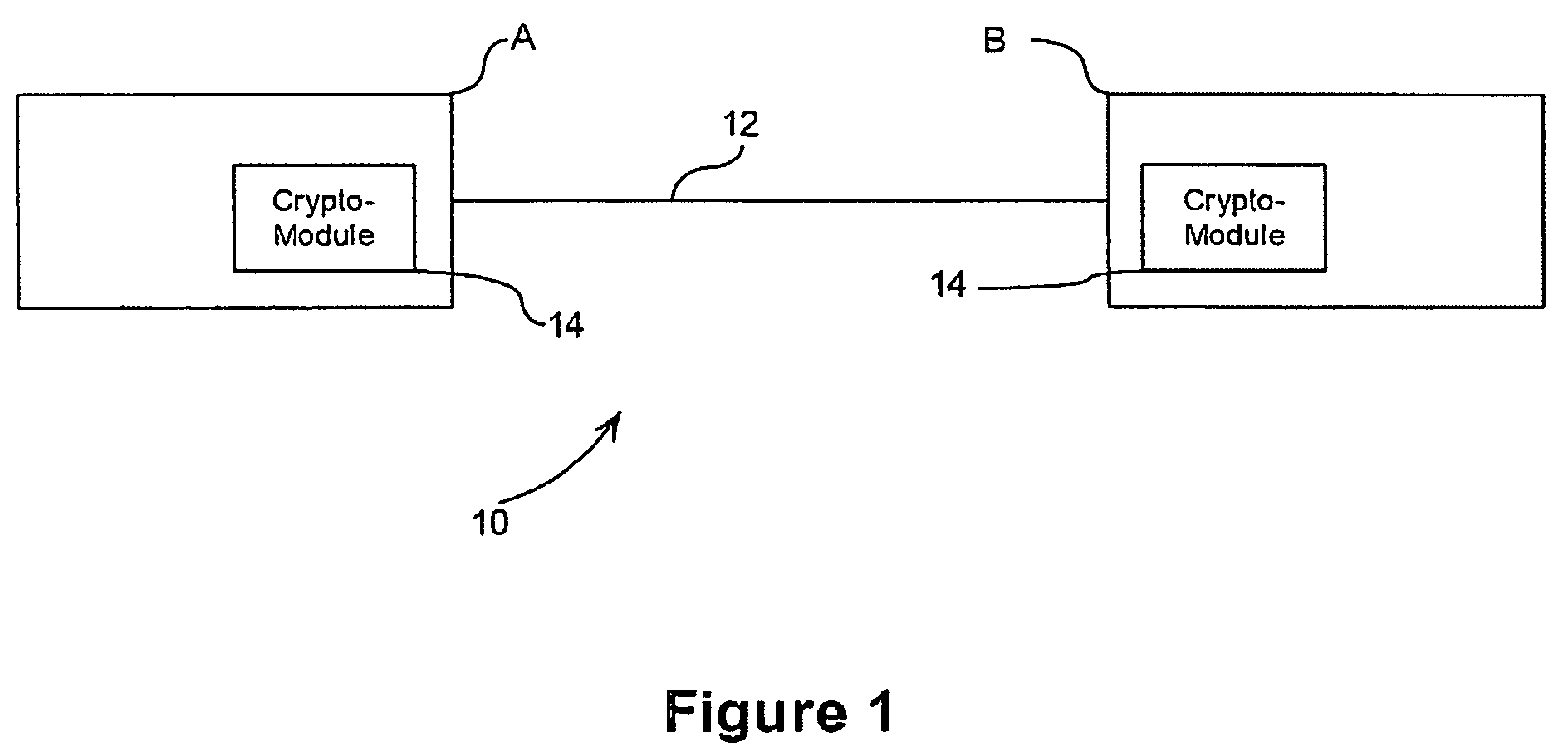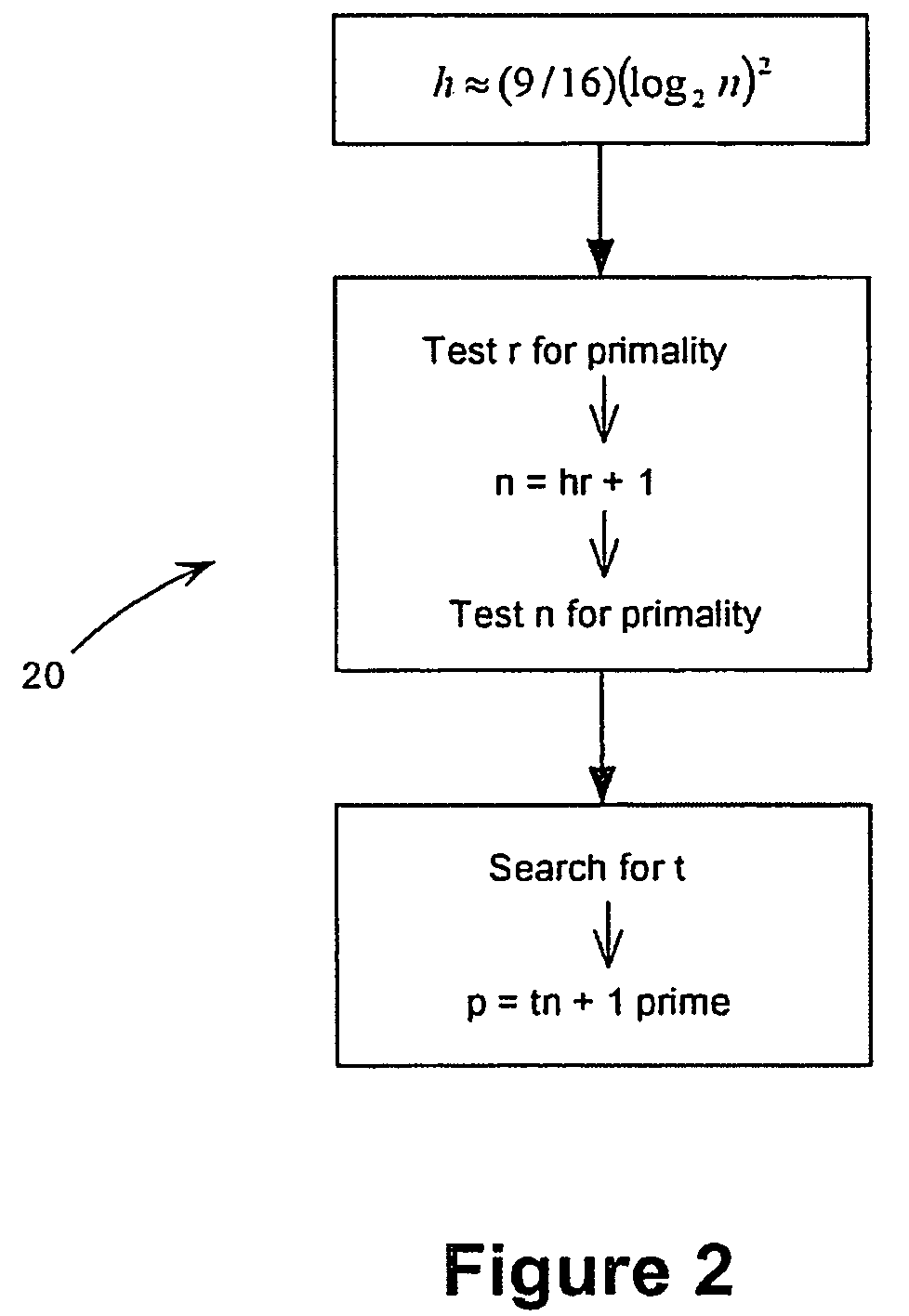Custom static Diffie-Hellman groups
a static group and diffie-hellman technology, applied in the field of static groups, can solve the problems of eve not being able to solve the dlp, the discrete logarithm problem (dlp) is hard to solve, and the dlp is a “hard” problem, so as to inhibit active attacks and inhibit active attacks
- Summary
- Abstract
- Description
- Claims
- Application Information
AI Technical Summary
Benefits of technology
Problems solved by technology
Method used
Image
Examples
embodiment
Mod p Embodiment
[0038]For simplicity of presentation, we assume that the Diffie-Hellman base or generator g in Zp* has an order n that is prime. It will be evident to one skilled in the art that this can be extended to the case in which g has order that is not prime.
[0039]The security of the domain name parameters depends on the size of the integer factors u of n−1. If some known factor u is near to n1 / 3, then the above attack 10 has a cost of about 3n1 / 3. This is significantly smaller than generic DLP attacks, which have a cost of about n1 / 2. It is known that a random n will generally have a factor u near to n1 / 3, therefore selecting n at random will not avoid the above attack 10. In the prior art, n has generally been chosen as the output of hash function, which makes n effectively random, which will not avoid the attack. By properly selecting n it has been found possible to avoid having a factor near to n1 / 3. It will be appreciated that the selection and testing of the parameters...
PUM
 Login to View More
Login to View More Abstract
Description
Claims
Application Information
 Login to View More
Login to View More - R&D
- Intellectual Property
- Life Sciences
- Materials
- Tech Scout
- Unparalleled Data Quality
- Higher Quality Content
- 60% Fewer Hallucinations
Browse by: Latest US Patents, China's latest patents, Technical Efficacy Thesaurus, Application Domain, Technology Topic, Popular Technical Reports.
© 2025 PatSnap. All rights reserved.Legal|Privacy policy|Modern Slavery Act Transparency Statement|Sitemap|About US| Contact US: help@patsnap.com



